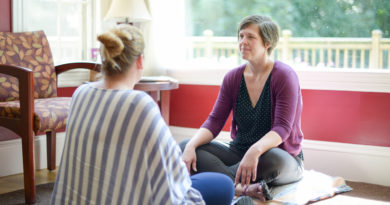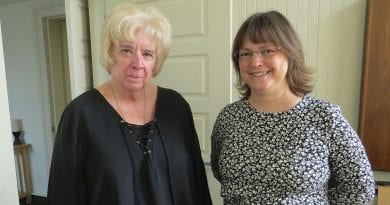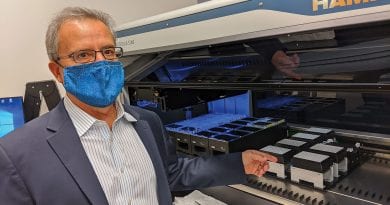Frank Robinson, Ph.D.
This Public Health Leader Is a Visionary and Innovator
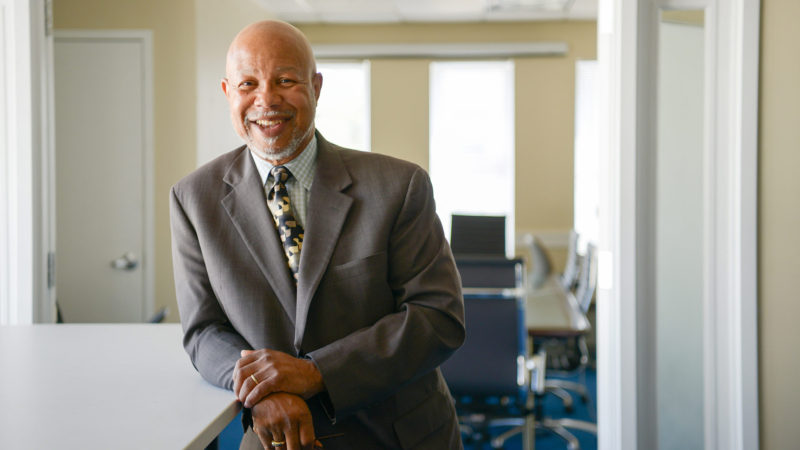
“Dr. Frank Robinson is a true visionary. He sees partnerships and systems that most other people don’t see. He doesn’t stop there … and he doesn’t allow other people’s short-sightedness or lack of imagination to get in his way. He persists because he loves to see other people, particularly young people, grow and thrive and achieve their dreams.”
Over the next few pages, you’ll read quite a bit of material that will help explain why Robinson, currently vice president of Public Health for Baystate Health, is one of two Healthcare Heroes in the Lifetime Achievement category for 2019. But none of the words to come can do that more effectively that those at the top.
They’re from the nomination form submitted by Jessica Collins, executive director of the Public Health Institute of Western Mass., a job Robinson once held himself, when the agency was known as Partners for a Healthier Community.
And Greater Springfield has, indeed, become a healthier community because of Robinson, who, over the past 35 years or so, has conceived or been closely involved with initiatives in realms ranging from children’s oral health to asthma; from food insecurity to sexual health; from health education to overall population health.
And who really knows if he would have been involved in any of that had it not been for … Hurricane Agnes.
The storm barreled into Elmira, N.Y. in late June, 1972, flooding the recently opened Elmira Psychiatric Center, where Robinson was working as a psychiatric social worker. That’s was, because the storm put him out of work.
He found new work essentially counseling youths displaced by the hurricane and relocated to nearby Elmira College.
“Dr. Frank Robinson is a true visionary. He sees partnerships and systems that most other people don’t see. He doesn’t stop there … and he doesn’t allow other people’s short-sightedness or lack of imagination to get in his way.”
“A call came out for help because these youngsters were running wild in the dorms unsupervised,” Robinson recalled, adding that he and a friend were dispatched to the scene because they were staff at a facility called the Elmira Neighborhood House — Robinson taught boxing there and knew most of the teens.
In some ways, Hurricane Agnes blew Robinson onto a different, more community-focused career path that, early on, featured extensive work with young people. And, by and large, he has stayed on that path.
Fast-forwarding through his résumé, he worked locally for the Mass. Department of Mental Health (at the same time as the other Lifetime Achievement hero for 2019, Katherine Wilson; see story on page 22); the W.W. Johnson Life Mental Health Center in Springfield; the Springfield Community Substance Abuse Partnership and Prevention Alliance, part of the Springfield Department of Health and Human Services; Partners for Community Health; and Baystate Health, first as director of Community Health Planning and now as vice president of Public Health.
At each stop, he has been a visionary and an innovator, leading initiatives ranging from the BEST Oral Health program to Baystate Academy Charter School to the Baystate Springfield Educational Partnership.
“Over the years, I have worked in positions that have advanced my specific interest in creating a healthier community and preventing health problems from occurring by giving people what they need,” he said while summing up his life’s work in a simple yet effective way, adding quickly that, while progress has been made, there is still a great deal of work to be done.
And he’s still doing it.
Indeed, Robinson, who turns 70 this month, acknowledged that he is working past what would be considered retirement age. He attributes this to both a passion for his work and the simple fact that he has some projects he’s still working on that he wants to see to conclusion.
These include something called 413 Cares, an online community-resource database that provides resource and referral information to residents as well as healthcare and social-service agencies across the region, and also works to make Baystate an “anchor network” within the region.
Explaining the latter, he said that, by adjusting and refocusing some of its spending — in such areas as goods and services, hiring, and real-estate facilities — an institution like Baystate can have an even more profound impact on the communities it serves.
“Simply by changing our business practices in terms of how we spend money — spending it deliberately, intentionally, to benefit communities where there’s been substantial disinvestment or there are substantial disparities — we can change those community conditions,” he noted. “That’s the healthcare anchor institution mission and vision.”
A lifelong desire to change community conditions for the better explains not only why Robinson is still working — and still innovating — but also why he’s a Healthcare Hero. Again.
Background — Check
Indeed, this will be Robinson’s second trip to the podium at the Healthcare Heroes gala.
He was one of a large contingent on hand to accept the award in 2017 in the category called Collaboration in Healthcare. The name on the envelope, if you will, was the Healthy Hill Initiative, or HHI, a broad effort to change the health landscape in the Old Hill neighborhood of Springfield.
Robinson, one of nearly a dozen players involved in the initiative who were gathered around a conference-room table at Way Finders to talk about it, described it as a program that existed at “the dynamic intersection of two social determinants of health — public safety and access to physical activity.”
And he should certainly know. In many respects, he has spent his whole career working to address the many social determinants of health, including poverty, food insecurity, inadequate housing, lack of transportation, domestic abuse, and the stress that results from all of the above.
Retracing his career steps, Robinson said there have been some pivots — such as the one forced by Hurricane Agnes — along the way, and also some pivotal moments.
One of the latter was the consent decrees that eventually closed Northampton State Hospital and Belchertown State School and the creation of community-based programs to serve the residents of those facilities.
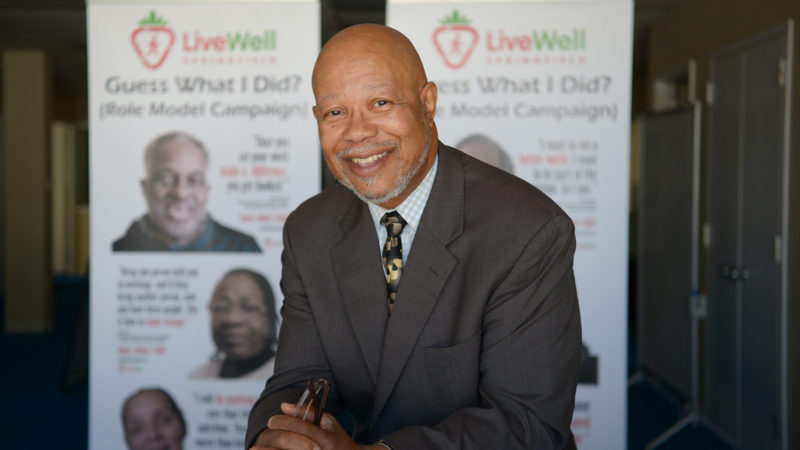
Robinson was involved in this work during his time with the Department of Mental Health, and he remembers it leaving him inspired in many ways.
“Both of those institutions were closed by forward-thinking insiders who worked with progressive outsiders, or advocates, and formed this sort of perfect union around change,” he told BusinessWest. “That was a pivotal event; I knew I could create large-scale community change if you got the formula right and if you got in front of problems, prevented problems, and worked to change the lives of individuals.”
And over the past 40 years or so, he has repeatedly demonstrated his ability to create community change by getting in front of problems and using teamwork to address them.
This has been the formula at each career stop, including a brief stint as deputy commissioner and superintendent of the Northeast Ohio Development Center in Cleveland in the early ’80s before returning to this area and working at the W.W. Johnson Life Mental Health Center, the community substance-abuse partnership, and especially at Partners for a Healthier Community, where Robinson spent nearly 20 years at the helm.
During his tenure there, his ability to convene, create partnerships, and stare down difficult problems resulted in several new initiatives to improve the overall health of the Greater Springfield community.
One such effort is the BEST Oral Health program, blueprinted to address the alarming problem that children with MassHealth had very limited access to oral-health preventive and comprehensive treatment services. Robinson secured state funding to launch a demonstration project in Springfield that became the BEST program; it created a local system of education, screening, and treatment for preschoolers to decrease oral-health disease.
Another example of coalition building during his tenure at PFC is the Pioneer Valley Asthma Coalition, which strives to improve asthma management and indoor air quality in Springfield and other area communities where substandard housing contributes to this ongoing health problem.
The Big Picture
Looking back over his career, Robinson said one of the goals — and one of the big challenges — has been to create change and generate solutions that would have an impact much longer than the typical three-year grant cycle.
“What you really need are initiatives with lasting impact where you can see change occur at a level where you improve the conditions of a whole population — where you can say, ‘we’ve changed community conditions,’” he explained.
With that thought in mind, he said there are two programs that “rise to the top,” as he put it, when he talks about career accomplishments.
One is the Baystate/Springfield Educational Partnership, an initiative that brings hundreds of students into the Baystate system to learn about careers in healthcare and places many of them in internships.
“Over the past 20 years, there have been substantial gains from our ability to work together across sectors and across organizations. And that’s new; there’s that essential element of trust across organizations that didn’t exist 15 years ago or 20 years ago, to be sure. And in spite of the competitive nature of social-service organizations in healthcare, there tends to be more agreement today that there is a public space where we can all come together and make a difference.”
These internships often lead to careers in healthcare, he went on, adding that, over the first 10 years of the program, there are many examples of this.
“Some of them are physicians, some of them are nurses — it’s across the whole spectrum,” he explained. “I know there are youngsters who are now physicians because of this program.”
The other program is the Baystate Academy Charter School, a 6-12 grade school based in Springfield and focused on healthcare careers.
The school graduated its first class of students, 45 of them, in June, said Robinson, adding that there was a 100% graduation rate and each graduating student was accepted at a two- or four-year college.
“The social determinant of health solution there is education,” Robinson explained. “The idea is that, if you graduate from Baystate Academy Charter School, you are college-ready.
“These two programs will be around long after I’m gone, producing change on a large scale and at a population level for our community,” he went on. “I’m very proud of both of them.”
Looking at the proverbial big picture from his unique vantage point, Robinson told BusinessWest there have been significant gains in many areas and many respects, especially when it comes to agencies and providers of healthcare working collaboratively, but significant challenges remain.
“Over the past 20 years, there have been substantial gains from our ability to work together across sectors and across organizations,” he explained. “And that’s new; there’s that essential element of trust across organizations that didn’t exist 15 years ago or 20 years ago, to be sure. And in spite of the competitive nature of social-service organizations in healthcare, there tends to be more agreement today that there is a public space where we can all come together and make a difference.
“This is especially true with matters of equity,” he went on. “We understand that there are significant challenges for large segments of our community, and the only way you’re to change those conditions is if people work together collaboratively and pool resources. There’s a clear recognition that this is the way to go.”
Elaborating, Robinson said there have always been coalitions, but today there is greater strength and “sophistication” to such partnerships, which has generated progress in a number of areas.
But when asked if Springfield is a much healthier community than it was 20 or 30 years ago, Robinson paused for several seconds and said ‘no.’
He based that answer on standard health measures and still-apparent gaps, or disparities, in overall care as viewed through what he called a “racial-equity lens.”
“If I compare poor people to the average, and black or brown people to the average, there are huge health-disparity gaps,” he noted. “The infant-mortality rate is still three times higher for black women than it is for white women; although the rate for black women has improved over time, the gap still exists.
“We find that same gap in issues such as low birth rate,” he went on. “These are measures not necessarily of the quality of healthcare, but measures of the conditions under which people live. Those gaps still exist, and so this city is still not healthy.
“We’re great as a community, and as a health system, when it comes to dealing with stuff that occurs inside the skin,” he continued, referring to the care provided at Baystate and other area facilities. “But if you think of health as things outside the skin that actually determine one’s health, we haven’t really improved there; poor people are sicker.”
These problems are not unique to Springfield, obviously, said Robinson, adding that most large urban centers continue to have these inequities in overall health based on income and opportunity. Progress has come, slowly, and the hope is that, by continuing to build coalitions and get in front of problems, more progress can be achieved.
This is what Robinson has spent a career doing, and he shows no signs of slowing down.
View to the Future
“Dr. Frank Robinson has worked tirelessly over the past 30 years to address public health and health inequities in our city and beyond. He is a recognized leader and a visionary in creating systems that make it easier for people to access needed healthcare services and creating systems in our neighborhoods that make it easier for people to make the healthier choice.”
There’s that word ‘visionary’ again. This time, it was put to use by Springfield Mayor Domenic Sarno, in that same nomination submission, as he went on about trying to put Robinson’s career, and his contributions, in perspective.
And visionary certainly fits. He’s been able to look at the community he serves, identify needs, and most importantly, create solutions for meeting those needs.
He’s spent a lifetime doing that, and that’s why he’s a Healthcare Hero.
Frank Robinson, Ph.D.George O’Brien can be reached at obrien@businesswest.com

